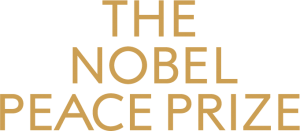आर. एस. प्रसाद सर का जाना रायगढ़ के शिक्षा जगत की ऐसी क्षति है, जिसकी प्रतिपूर्ती (शायद) कभी न हो पाएगी…..


 |
| साभार: जनकर्म समाचार पत्र (संदर्भ हेतु प्रयुक्त) |
“ऊर्जा ना कभी उत्पन्न होती है न कभी नष्ट होती है,
वह सिर्फ अपना रूप बदलती है"
[ऊर्जा संरक्षण का सिद्धांत]
“कोई पिण्ड यदि स्थिर है तो तब तक स्थिर रहता है
या गतिमान है तो तब तक गतिमान रहेगा
जब तक उस पर बाह्य बल न लगे।"
[न्यूटन का गति का पहला नियम]
आदरणीय आर. एस. प्रसाद सर को मैं सन् 1996 से जानता था। जब पहली बार मैंने नटवर स्कूल में दाखिला लिया था। उसके पहले कभी किसी स्कूली आयोजन में देखा हो तो मुझे याद नहीं। उनकी पहली बार ली गई क्लास से लेकर कुछ महिने पहले हुई बातचीत तक हमेशा एक अपनेपन का एहसास बना रहा, अब उन्हीं एहसास के सहारे ही बाकी का सारा जीवन कटेगा। मेरे अंदर के वैज्ञानिक को जिन्दा रखने और विज्ञान के लिए तड़प को बनाए रखने में प्रसाद सर का बहुत योगदान है। जब मैंने इस विज्ञान क्लब को शुरू किया था तब वह पहले ही दिन से हमारे सलाहकार व संरक्षक के रूप में सक्रिय थे। एक व्यस्त शिक्षक और शासकीय कर्मचारी होने के बावजूद हमें जहाँ भी उनकी जरूरत होती थी वह बिना किसी शर्त समय से पहुँच जाते थे। भौतिक विज्ञान का उनसे बेहतर शिक्षक मैंने अपने जीवन में नहीं देखा। महाविद्यालय स्तर में भी उनके जैसा प्रतिबद्ध शिक्षक कभी नहीं मिला। उन्हें क्रिकेट बहुत पसंद था वह न सिर्फ अच्छे खिलाड़ी थे बल्कि क्रिकेट के खेल को एक वैज्ञानिक की तरह एनालिसिस कर समझा सकने का सामर्थ्य भी रखते थे। उनके छात्रों को गति के नियम आज भी क्रिकेट की भाषा में ही याद है। उनका यह अंदाज-ए-बयां उनके छात्रों को मंत्र-मुग्ध करके रखता था। मुझे आज भी याद है 1997 में दूरदर्शन में शाम 4 बजे अलादीन सिरियल आता था जिसे देखने बच्चे स्कूल से लंच के बाद भाग जाते थे लेकिन प्रसाद सर की क्लास सेकेंड हाफ में होने से हमारे क्लास के इक्का दुक्का (जिन्होंने भविष्य में हर तरह की पढ़ाई छोड़ दी) को छोड़कर लगभग सभी (मैथ्स व बायो) के छात्र उपस्थित रहते थे।
दरअसल प्रसाद सर ने एक तरह का प्रतिमान (स्टैंडर्ड) स्थापित कर दिया है शिक्षकों के लिए। अब शायद उन जैसा कोई शायद ही बन पाए लेकिन आदर्श का पीछा करके ही बेहतर बना जा सकता है।उनसे दो माह पहले जब आखरी बार बात हुई तब उनसे टेलिस्कोप के बारे में ही चर्चा हुई थी कि कौन सा माडल लेना सही रहेगा।वह मेरे बौद्धिक परिवार का अभिन्न हिस्सा थे और जीवन भर रहेंगे।
{कोविड-19 नामक इस महामारी के नियंत्रण में आने तक पता नहीं कितने लोग आखिर में बचे रहेंगे। लेकिन मेरा सवाल वैज्ञानिक समुदाय, सरकार, चिकित्सक सभी से है कि आखिर यह बेबसी खत्म होगी या नहीं। कम से कम जो वास्तविक स्थिति है वैज्ञानिक शब्दों में उसे पूरी पारदर्शी तरीके से सार्वजनिक मंचों पर रखा जाए जिससे लोग उसे देख, समझ पाए क्योंकि यही गति रही तो अंत में जब कोई बचेगा ही नहीं तो जिसे गोपनीय कहके छिपाया जा रहा है वह किसके काम आएगा। और वैज्ञानिक भाषा लोग समझ नहीं पाएंगे यह तर्क देकर ज्ञान/तथ्य को ढकने से समाज/दुनिया अंधे कुँए में ही जाएगी।}
[ ऊपर जो फोटो प्रयोग किए गए हैं उस जमाने के हैं जब मेरे पास कोई कैमरा नहीं था ये उस दौर के मोबाइल इत्यादि से लिये गये तस्वीर हैं, गुणवत्ता के लिये क्षमा प्रार्थी हूँ।]


